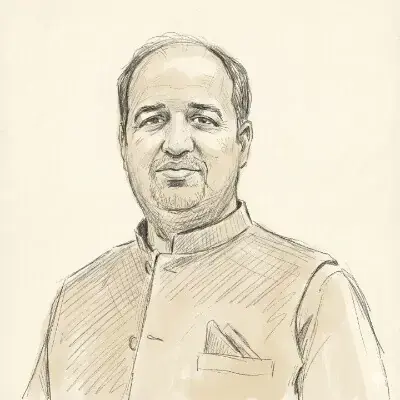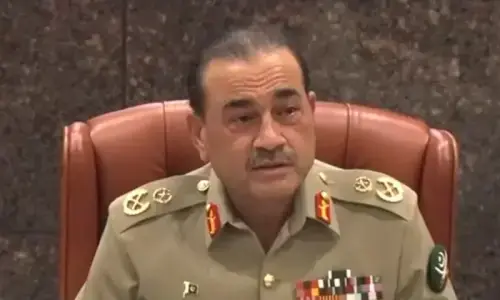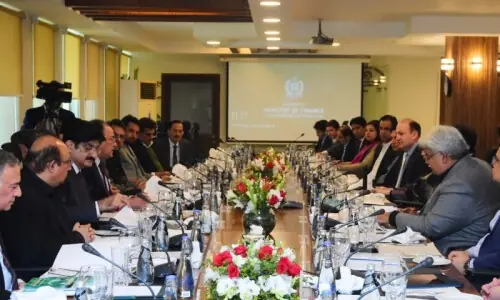ISLAMABAD: The literacy rate increased by 1.6pc to 62.3pc in 2017-18, from 60.7pc in 2014-15, according to the Economic Survey of Pakistan launched on Monday.
The survey stated: “Pakistan social and living standards measurement (PSLM) survey could not be conducted in 2016-17 and 2017-18 on account of ‘Population & Housing Census in 2017’. However, according to Labour Force Survey 2017-18, literacy rate trends shows 62.3pc in 2017-18 (as compared to 60.7pc in 2014-15), males (from 71.6pc to 72.5pc) and females (from 49.6pc to 51.8pc).”
An area-wise analysis suggests that the literacy rate increased in both rural (51.9pc to 53.3pc) and urban (76pc to 76.6pc) areas.
“It is also observed male-female disparity narrowing down with time span. Literacy rate increases in all provinces, Khyber Pakhtunkhwa (54.1pc to 55.3pc), Punjab (61.9pc to 64.7pc) and Balochistan (54.3pc to 55.5pc) except in Sindh (63.0pc to 62.2pc) where marginal decrease has been observed.”
Literacy rate increased in all provinces but Sindh; education expenditure rose from 2.2pc of GDP in 2016-17 to 2.4pc of GDP in 2017-18
Education expenditure
The survey said that expenditure on education was estimated at 2.4pc of GDP in 2017-18, compared to 2.2pc in 2016-17.
Education experts have called for at least 4pc of the GDP to go towards education.
The survey said the government is “committed” to increasing financial resources for education. It said education expenditure has risen gradually since 2013-14.
Enrolment
While discussing enrolment at the school and college level, the survey said that an increase of 7.3pc was observed in pre-primary enrolment at the national level, which increased 12.27 million in 2017-18 compared to 11.4m in 2016-17.
It said there were a total of 172,200 functioning primary schools – grades one to five – in 2017-18, with 519,000 teachers across the country. These schools had an overall enrolment of 22.9m students, an increase of 5.5pc from the previous year.
There were 46,800 middle schools in 2017-18, with 438,600 teachers and enrolment of 7.3m, an increase of 4.3pc from the enrolment level in 2016-17. Enrolment is estimated to increase by another 3.7pc to 7.6m in 2018-19.
There were a total of 30,900 high schools with 556,600 teachers functioning in the country in 2017-18. High school enrolment, at 3.9m, represents an increase of 7.4pc from the enrolment level of 3.6m in 2016-17.
High school enrolment is estimated to increase by another 6.6pc to 4.1m in 2018-19.
They survey said there were a total of 5,200 higher secondary schools and intermediate colleges with a teacher population of 121,900 in 2017-18.
It said the overall enrolment of 1.75m in these schools was a healthy increase of 9.8pc from the enrolment level in 2016-17. Enrolment is expected to rise to 1.84m, by another 5pc, in 2018-19.
A total of 3,700 technical and vocational institutes with 18,200 teachers were functional in 2017-18. The enrolment of 433,200 represents an increase of 25.6pc from the previous year. Enrolment is projected to increase by 8.7pc during 2018-19.
There were 1,657 degree colleges in the country with 42,000 teachers in 2017-18. That year, a significant decline of 47.3pc in enrolment to 503,800 was observed at the enrolment level, which is projected to decrease further by 4.3pc in 2018-19.
There were 186 universities in 2017-18, the survey said, with 56,900 teachers and a total enrolment of 1.6 million. Enrolment was 7.7pc higher than in previous years, but the survey said: “The growth in enrolment however is projected to decline by 0.2pc in 2018-19.”
Published in Dawn, June 11th, 2019



































